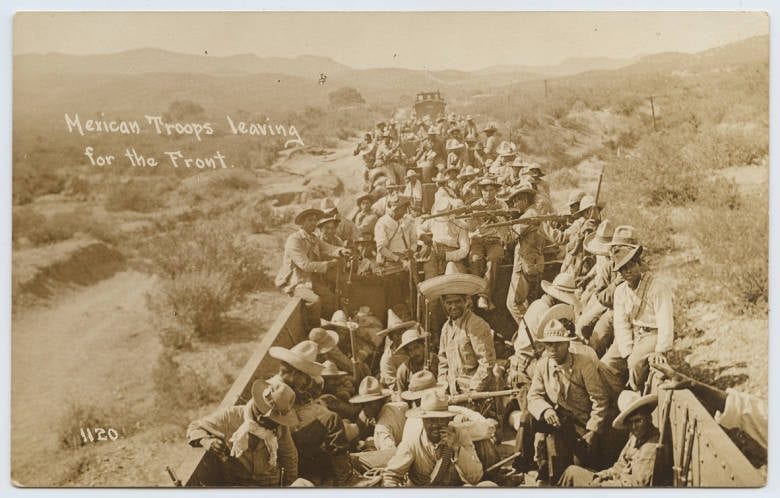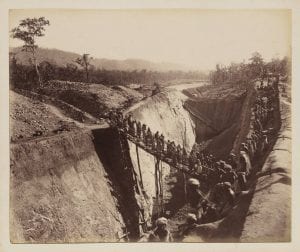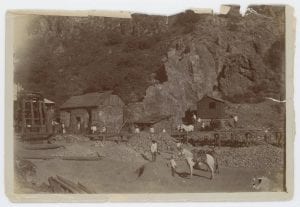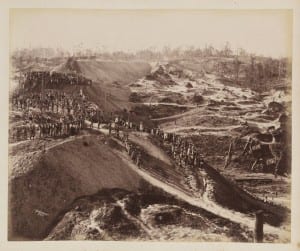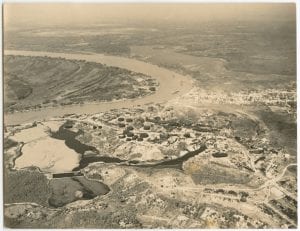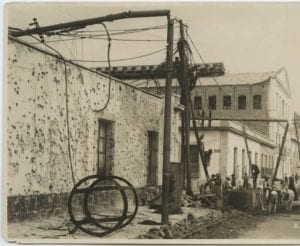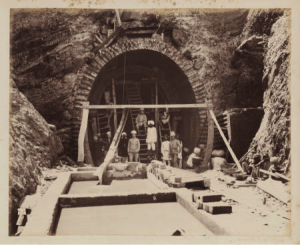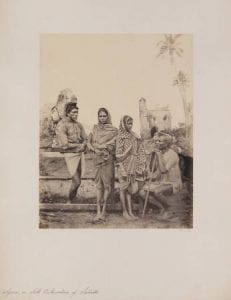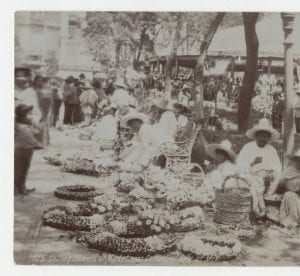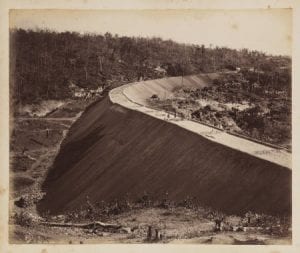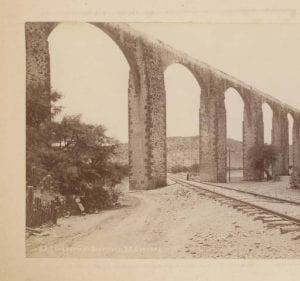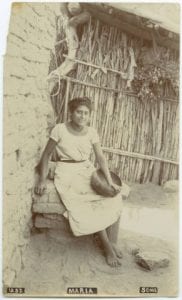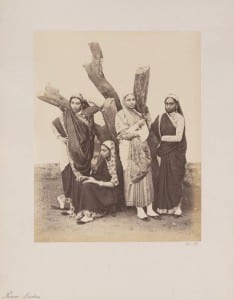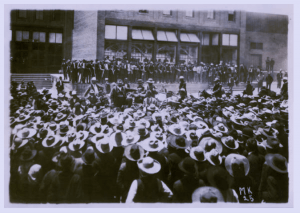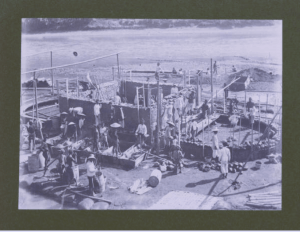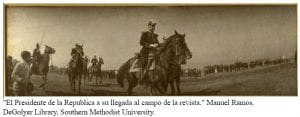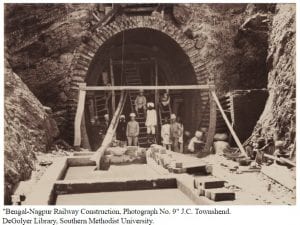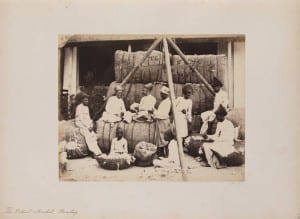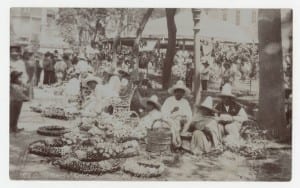Bengal-Nagpul Railway Construction, Photograph NO.16
Townshend, J.C
The photograph depicts a long sprawling ditch with hundreds of workers crawling over it like ants. Suspended about thirty feet in the air, they cross the ditch on a very rickety bridge. The crowd is not only men, as there are as many women as men. Trudging across the bridge, they bring heavy resources to the other side of the ditch. This scene illustrates the colonial rulers lack of care for the safety of their indigenous workers. They solely care about the profits to be made from the railroad, accompanied along with sale of natural resources pulled from the ground. It can be inferred that they recruited large numbers of villagers to fill their labor force as it consists of both men and women and stretches as far as the eye can see. This raises the question as to why they recruited only dark skinned people? The entire labor force consists of dark skinned individuals, so it can be deduced that they provided a cheap and easy labor opportunity, leaving no reason to hire anyone else. This is furthered by the fact that there are no European supervisors in the photograph, only indigenous workers. This extends the question as to why not? This question could be answered in one of two ways; either the colonialist supervisors are worried that their treatment of workers could cause them trouble down the road if photographed, or they recruited indigenous workers as supervisors. India had a long-standing caste system that they could have played off of to construct an economic system.
Mining Operations
Thomas Hudson Thatcher
The picture illustrates a mining operation in Mexico. Old wood cabins contrasted against the rocky mountainside show how rustic the conditions are. Horses and men fill the picture, spread throughout the worksite. The worker’s dark skin is blackened by the bright sunlight, even under the protection of their clothing. The cabins allude to the fact that the indigenous workers spent all of their time on site. The work force is completely indigenous, as not a single white European is seen. Their clothes are all standardized, as if to possibly represent a company uniform for the workers. From this, the deduction can be made that the workers are given housing and clothing in exchange for labor. But if the goal is to search for cheap labor then why are their only men working here? The Bengal-Nagpul Railway Construction shows men and women engaging in dangerous manual labor, so why is it any different here? Were there more labor standards in Mexico, or was mining just considered man’s work? This allows for the deduction that the indigenous laborers, although given horrible working conditions, had worker’s rights, as women seem to not be allowed to work in the most dangerous of environments.

